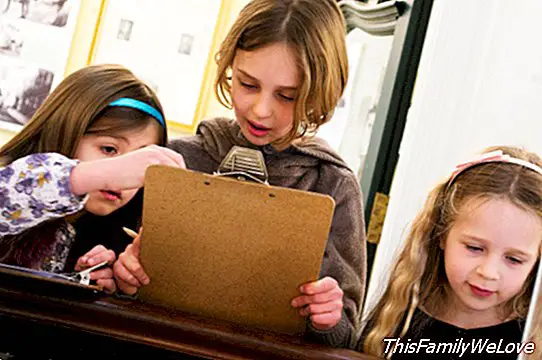Aesthetic education: how to develop refinement
The Estetic Education it helps in the integral formation of the child, since it supposes putting into play the intelligence, the memory, the imagination and the feelings. An important part of aesthetic education related to behavior is therefinement that guides us to detect those attitudes or inappropriate actions in a certain situation.
These inappropriate situations can be "ugly" for those who see us, accompany us or for ourselves. It's different from kitsch or pedantry. In this respect, the family is going to assume a key element in the maturity of this capacity. The children, in general, are careless, reckless and "little protocol".
The refinement in children's behavior
Who has not lived the experience of observing how his 5-year-old son, when he sees his plate of food arrive at the table, launches himself and begins to eat the macaroni with his hands. And, once again we will have asked him "What are the silverware for?" And now, at age 9, our daughter sits at the table and we must insist with phrases like "love, sit straight, use all the cutlery and also the napkin". This is the refinement we talked about, the manners at the table. It has always been indicated that the timing of meals provides families with many educational opportunities. And in the education of good taste too.
Refinement guides us to detect those attitudes or inappropriate actions in a certain situation, or that may be "ugly" for those who see us, accompany us or for ourselves. And likewise, by educating such external aspects of the refinement of our children, we are creating the habit that will strengthen the capacity and this, in turn, will be put into operation in any other necessary circumstance. Refinement will help us to choose from the best to the best.
The value of being right: how to develop refinement
1. The correction. In dressing, in speaking and in being we must always educate "correction". Precisely nowadays that it seems that we live surrounded by vulgarity, that everything is worth or everything does not matter, we have to transmit to our children the value of being correct. That good taste to use the right vocabulary, to dress appropriately, to stay with the right attitude in a concert, in a ceremony, in a conversation, will learn from and with us. The correction in our thinking and acting facilitates coexistence and helps us to resolve possible conflicts with others. How many of us have ever been told, "You're right, but you've lost it by the ways!"
2. The proportion. In this quality of good taste we will emphasize the expression of our feelings. We are not referring to repression of them, but to know how to manifest them at the moment and with the right person. Our children in these ages do not know in many cases what is the appropriate way to act. Those who are very uninhibited will have to guide them to learn to restrain their expressions of joy, affection, sadness. Those who are less emotional will have to help them to externalize their feelings and to value positively and with pleasure the expressions of others towards him. In this sense, professor Pérez Alonso-Geta affirms that "the person who possesses the sense of taste gets authority and influence and makes fair decisions, which ensure the obtaining of adequate knowledge." This excellence of taste not only implies culture, but also properly applied culture The lack of taste has its origin inevitably in the negligence and the false taste in the inadequate culture ".

We must teach our children that a reckless person, constantly calling attention, speaking more than the account, raising the tone of voice over the desired or telling anecdotes out of place, is uncomfortable and annoying for those who surround; now your friends, your classmates or for the teacher, but in the future for your co-workers or neighbors. In the same way, although possibly less striking, it will happen to the child who is excessively quiet or who is disturbed by any alteration of the environment in which he finds himself. Therefore, educating in prudence brings us closer to the right term, where virtue is found.
5 tips for the application of aesthetic education
1. Take every opportunity of everyday life. May they observe the beauty of the colors of the sky, a day with a particularly beautiful moon, snowy mountains, etc.
2. Educating good taste gives a differentiating tone to families, but it is important to make the children see that not all of us have this luck, nor the same opportunities.
3. Self-control of forms and manners. The family should be the place where we can manifest ourselves as we are, but we should not confuse this with "losing the ways and manners" with ours.
Four. The beauty, the good taste, the sensitivity towards harmony starts at home. That's why we can spend some time decorating.
5. Organize cultural plans. And so that the pleasure is double we can previously investigate what we are going to see. The more you know, the more you appreciate the beauty that we have before us.
Mª Jesús Sancho. Psychologist Master in Marriage and Family. Teacher of the María Inmaculada School of Alfafar (Valencia)




